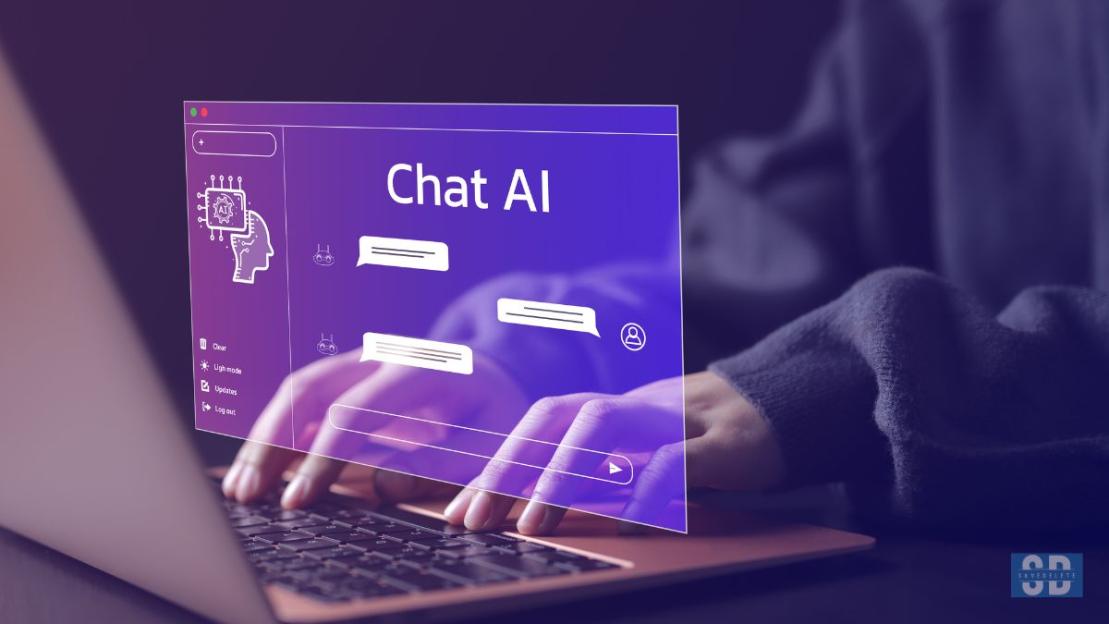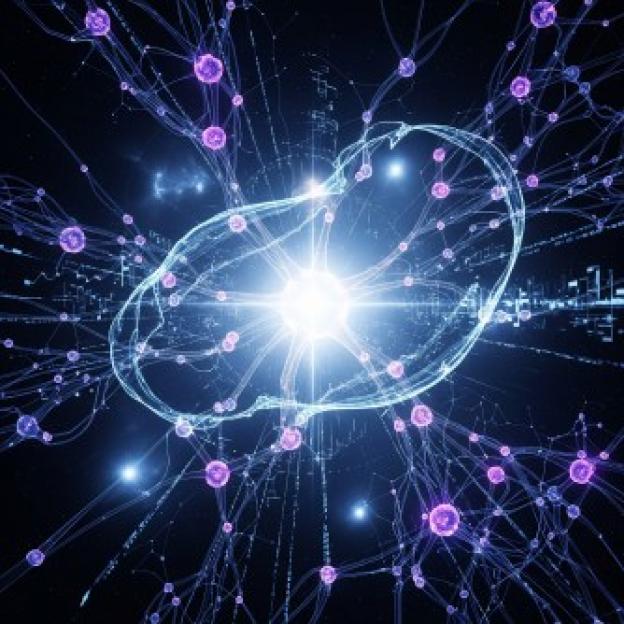You’re listening to your favorite song, and suddenly you wonder what it would sound like without the vocalsâjust the pure instrumental magic. Or maybe you’re dreaming of singing your heart out at karaoke night, but can’t find the backing track anywhere.
That frustrating search for the perfect instrumental version ends here. AI vocal remover technology has revolutionized how we experience music, turning any song into a customizable playground where you control every element.
With just a few clicks, you can strip away vocals, isolate instruments, or create the perfect backing track for your next performance. It’s like having a professional recording studio at your fingertips, minus the expensive equipment and complicated software.
What is an AI Vocal Remover?
An AI vocal remover is a sophisticated software tool that uses artificial intelligence and machine learning algorithms to separate vocals from instrumental tracks in any song. Unlike traditional methods that relied on basic frequency filtering or phase cancellation techniques, modern AI vocal removers employ deep learning neural networks trained on thousands of songs to identify and extract different audio components with remarkable precision.
These tools work by analyzing the unique characteristics of human voicesâtheir frequency patterns, harmonics, and temporal featuresâand distinguishing them from instrumental sounds. The AI essentially “learns”; what vocals sound like across different genres, languages, and recording styles, allowing it to make intelligent decisions about which parts of the audio spectrum belong to the voice and which belong to the instruments.
The technology behind AI vocal removers represents a significant leap forward in audio processing. Traditional vocal removal methods often resulted in hollow, tinny-sounding instrumentals with artifacts and distortion. Today’s AI-powered tools can achieve near-studio quality separation, preserving the richness and depth of the original recording while cleanly extracting or removing specific elements.
How AI Vocal Remover Technology Works
The magic of AI vocal removal happens through a process called source separation, which involves several sophisticated steps working together seamlessly. Understanding this process helps you appreciate why modern vocal removers are so much more effective than older methods.
The Technical Process
When you upload a song to an AI vocal remover, the first step involves converting the audio file into a spectrogramâa visual representation of the sound frequencies over time. This spectrogram serves as a map that the AI can analyze, showing where different sounds occur in both the frequency and time domains.
The AI model then processes this spectrogram through multiple layers of neural networks. These networks have been trained on massive datasets containing isolated vocals and instrumentals from thousands of songs. Through this training, the AI has learned to recognize patterns that distinguish vocals from various instruments, even when they overlap in frequency ranges.
Deep Learning and Neural Networks
The heart of modern vocal removal technology lies in deep learning architectures like convolutional neural networks (CNNs) and recurrent neural networks (RNNs). These networks excel at pattern recognition and can identify subtle characteristics that differentiate vocals from instruments, such as:
- Vibrato and pitch variations unique to human voices
- Formant frequencies that give voices their distinctive qualities
- Temporal patterns in vocal phrasing and breathing
- Harmonic structures specific to vocal cords
The AI doesn’t just look at individual frequencies; it analyzes the entire context of the sound, understanding how different elements interact and overlap. This contextual understanding allows it to make intelligent decisions about ambiguous areas where vocals and instruments share similar frequency ranges.
Output Generation
After the AI completes its analysis, it generates separate audio streamsâtypically one containing only the vocals (acapella) and another with only the instrumentals (karaoke version). Advanced vocal removers can go even further, separating individual instruments like drums, bass, piano, and guitar into their own tracks, giving users unprecedented control over the music.
Top AI Vocal Remover Tools in 2025
The market for AI vocal removers has exploded, with numerous options catering to different needs and skill levels. Here’s a comprehensive look at the best tools available today:
LALAL.AI â Professional Grade Separation
LALAL.AI stands out as one of the most sophisticated vocal removers available, utilizing proprietary neural networks called Phoenix, Orion, and Perseus. What sets LALAL.AI apart is its ability to separate not just vocals and instrumentals, but up to 10 different stem types including drums, bass, piano, electric guitar, acoustic guitar, and synthesizer.
The platform offers exceptional audio quality preservation, supporting lossless formats like WAV and FLAC. Users particularly appreciate the preview feature, which allows you to hear the separation quality before committing to the full processing. The enhanced processing options and de-echo features make it ideal for professional applications.
Moises â The Musician’s Companion
Moises has carved out a niche as the go-to tool for musicians and music students. Beyond simple vocal removal, it offers an integrated suite of features including pitch shifting, tempo adjustment, chord detection, and real-time key changes. The ability to create click tracks synchronized with any song makes it invaluable for practice sessions.
What makes Moises special is its focus on the practicing musician. You can loop sections, adjust the volume of individual instruments, and even generate sheet music from audio files. The mobile app is particularly well-designed, allowing musicians to practice anywhere.
PhonicMind â The Pioneer
As one of the first AI-powered vocal removers, PhonicMind has years of refinement behind its technology. It excels at handling complex mixes and maintains excellent audio quality even with challenging source material. The service offers both standard vocal removal and multi-stem separation, making it versatile for various use cases.
PhonicMind’s strength lies in its consistency and reliability. Users report excellent results across different music genres, from classical to heavy metal. The platform also offers unique features like STEM file export for DJ software compatibility.
EaseUS Online Vocal Remover â User-Friendly Excellence
EaseUS has created one of the most accessible vocal removers, perfect for beginners who want professional results without a learning curve. The interface is clean and intuitive, with a simple three-step process: upload, process, and download. Despite its simplicity, the AI technology behind it delivers impressive results.
The tool supports a wide range of audio and video formats, making it versatile for different projects. It also includes features for extracting audio from video files and processing content directly from YouTube links, adding convenience for content creators.
Voice.ai Vocal Remover â Unlimited Free Access
Voice.ai offers a compelling free option with no hidden limitations or watermarks. The tool uses advanced AI algorithms to deliver clean vocal separation while maintaining the integrity of the instrumental track. What’s particularly impressive is the processing speedâeven large files are handled quickly.
The platform also includes additional audio tools like echo removal and stem splitting, making it a comprehensive solution for audio manipulation. The ability to process files without creating an account makes it perfect for quick, one-off projects.
Benefits of Using AI Vocal Removers
The rise of AI vocal remover technology has democratized music production and opened up creative possibilities that were once exclusive to professional studios. Let’s explore the key benefits that make these tools indispensable for modern music enthusiasts.
For Karaoke Enthusiasts
Gone are the days of searching endlessly for karaoke versions of your favorite songs. AI vocal removers instantly transform any track into a karaoke-ready instrumental. This means you can:
- Create karaoke versions of the latest hits before official versions are released
- Customize the backing track by adjusting individual instrument levels
- Practice with songs in your preferred key using pitch-shifting features
- Build a personalized karaoke library with obscure or regional songs
The quality of AI-generated karaoke tracks often surpasses traditional karaoke versions, which frequently sound synthetic or lack the original’s energy. AI preserves the authentic feel of the original recording while cleanly removing vocals.
For Musicians and Producers
Professional musicians and producers have embraced AI vocal removers as essential tools in their creative arsenal. These tools enable:
- Sampling and Remixing: Extract specific elements from existing tracks for creative reinterpretation
- Practice and Learning: Isolate instrument parts to learn complex arrangements
- Cover Versions: Create unique arrangements by replacing original vocals with your own
- Mashup Creation: Combine vocals from one song with instrumentals from another
- Audio Restoration: Salvage old recordings by separating and remastering individual elements
For Content Creators
YouTube creators, podcasters, and social media influencers find AI vocal removers invaluable for:
- Creating background music free from copyright claims
- Producing music reaction videos focusing on instrumental arrangements
- Developing educational content about music production
- Adding custom soundtracks to videos without vocal distractions
- Creating unique audio content for TikTok and Instagram Reels
For DJs and Live Performers
The DJ community has particularly benefited from AI vocal remover technology:
- Create acapella versions for live mixing and mashups
- Develop unique transitions between songs
- Isolate beats and basslines for extended mixes
- Prepare custom edits for specific venues or events
- Extract vocals for sampling in electronic music production
Step-by-Step Guide: How to Use an AI Vocal Remover
Using an AI vocal remover is surprisingly straightforward, but following the right steps ensures optimal results. Here’s a comprehensive guide to get you started:
Step 1: Choose Your Audio Source
Most AI vocal removers accept various input methods:
- Direct File Upload: Upload MP3, WAV, FLAC, or other supported audio formats
- URL Input: Paste links from YouTube, SoundCloud, or other platforms
- Cloud Storage: Some tools integrate with Google Drive or Dropbox
- Recording: A few platforms allow direct recording through your microphone
For best results, use high-quality source files. Lossless formats like WAV or FLAC produce superior separation compared to compressed MP3s.
Step 2: Select Processing Options
Before processing, consider these options:
- Separation Type: Choose between simple vocal/instrumental or multi-stem separation
- Quality Settings: Select processing quality (affects time and output quality)
- Enhancement Features: Enable options like de-echo or noise reduction if available
- Output Format: Decide on your preferred file format for downloads
Step 3: Upload and Process
Once you’ve configured your settings:
- Click the upload button and select your file
- Wait for the upload to complete (time varies by file size)
- Initiate the AI processing
- Monitor the progress indicator
Processing time typically ranges from a few seconds for simple vocal removal to several minutes for complex multi-stem separation.
Step 4: Preview and Adjust
Many platforms offer preview features:
- Listen to the separated tracks before downloading
- Adjust the balance between elements if the tool allows
- Try different processing modes if the first attempt isn’t perfect
- Compare the output with the original to ensure quality
Step 5: Download Your Files
After you’re satisfied with the results:
- Download individual stems (vocals, instrumentals, specific instruments)
- Save in your preferred format (MP3 for convenience, WAV for quality)
- Organize files with clear naming conventions
- Back up important separations for future use
Advanced Features and Capabilities
Modern AI vocal removers offer sophisticated features that extend far beyond simple vocal extraction. Understanding these capabilities helps you maximize the potential of these powerful tools.
Multi-Stem Separation
Advanced platforms can isolate multiple elements simultaneously:
- Vocals: Lead vocals, backing vocals, and harmonies
- Rhythm Section: Drums, bass, and percussion
- Melodic Instruments: Piano, guitar, synthesizers
- Orchestral Elements: Strings, brass, woodwinds
This granular control allows for complex remixing and arrangement modifications that were previously impossible without access to original multitrack recordings.
Audio Enhancement Technologies
Many AI vocal removers include additional processing capabilities:
Echo and Reverb Removal: Clean up vocals recorded in echoey environments or remove excessive reverb from older recordings.
Noise Reduction: Eliminate background noise, hum, or hiss without affecting the desired audio.
Dynamic Range Optimization: Balance volume levels across separated tracks for professional-sounding results.
Frequency Enhancement: Boost or cut specific frequency ranges in isolated stems.
Batch Processing
For users working with multiple files:
- Process entire albums or playlists in one session
- Apply consistent settings across multiple tracks
- Queue files for overnight processing
- Organize outputs automatically into folders
Integration Features
Modern vocal removers often integrate with other tools:
- DAW Plugins: Use vocal removal within your digital audio workstation
- Mobile Apps: Process files on smartphones and tablets
- Cloud Sync: Access processed files across devices
- API Access: Integrate vocal removal into custom applications
Quality Considerations and Best Practices
Achieving optimal results with AI vocal removers requires understanding various factors that affect output quality. Here’s what you need to know:
Source Material Quality
The quality of your input file directly impacts the separation results:
- Bitrate: Higher bitrate files (320 kbps MP3 or lossless) produce better results
- Dynamic Range: Songs with good dynamic range separate more cleanly
- Recording Quality: Professional recordings typically separate better than amateur recordings
- Mixing Style: Songs with clear separation in the original mix work best
Genre-Specific Considerations
Different music genres present unique challenges:
Pop and Rock: Generally produce excellent results due to standard mixing practices
Electronic Music: Can be challenging due to synthesized elements that blur the line between “vocal”; and “instrumental”;
Classical Music: Orchestral pieces may confuse AI when separating solo instruments from ensemble parts
Hip-Hop: Heavy processing on vocals (auto-tune, vocoders) can affect separation quality
Live Recordings: Crowd noise and natural reverb add complexity to the separation process
Optimizing Your Results
Follow these best practices for superior output:
- Start with the Highest Quality Source: Use original CDs or high-quality digital files rather than compressed streaming rips
- Experiment with Different Tools: Each AI model has strengths and weaknesses; try multiple platforms for challenging tracks
- Use Appropriate Settings: Match processing settings to your intended use (quick preview vs. professional production)
- Post-Process When Necessary: Use audio editing software to fine-tune separated tracks
- Manage Expectations: While AI technology is impressive, perfect separation isn’t always possible, especially with complex arrangements
Common Use Cases and Applications
AI vocal remover technology serves diverse communities and purposes. Understanding these applications helps you discover new creative possibilities.
Educational Applications
Music education has been transformed by vocal removal technology:
- Transcription Practice: Students can isolate instruments to transcribe parts accurately
- Ear Training: Focus on specific elements to develop listening skills
- Performance Preparation: Practice with professional backing tracks
- Music Theory: Analyze harmonic progressions without vocal distraction
- Language Learning: Create pronunciation exercises using popular songs
Professional Music Production
Studios and producers leverage these tools for:
- Remix Creation: Develop official remixes when stems aren’t available
- Sample Clearance: Isolate elements for legal sampling
- Restoration Projects: Revive old recordings by separating and remastering
- Demo Creation: Build arrangements around isolated vocal performances
- Sound Design: Extract unique textures for film and game audio
Live Performance Enhancement
Performers use vocal removers to:
- Create custom backing tracks for solo acts
- Prepare medleys with seamless transitions
- Develop audience participation segments
- Design unique arrangements for cover bands
- Build layered performances with isolated elements
Content Creation and Social Media
The creator economy benefits through:
- Music Reaction Videos: Focus on instrumental virtuosity
- Dance Tutorials: Use instrumental versions for clearer instruction
- Podcast Production: Create custom background music
- Gaming Streams: Avoid copyright strikes with instrumental versions
- Educational Content: Demonstrate music theory concepts
Legal Considerations and Copyright
While AI vocal remover technology opens creative doors, it’s crucial to understand the legal landscape surrounding its use.
Personal Use vs. Commercial Use
Personal Use: Generally, removing vocals for personal enjoyment, practice, or education falls under fair use in most jurisdictions. You can:
- Create karaoke tracks for home use
- Practice instruments with isolated backing tracks
- Study musical arrangements
- Share with friends in private settings
Commercial Use: Using separated tracks commercially requires careful consideration:
- Obtain proper licenses for public performances
- Secure rights for releasing remixes or covers
- Get permission for using samples in original productions
- Respect copyright holders’ distribution rights
Copyright Best Practices
Follow these guidelines to stay legally compliant:
- Always Credit Original Artists: Even when using instrumental versions
- Seek Permission for Commercial Projects: Contact rights holders before monetizing content
- Understand Platform Policies: YouTube, Spotify, and others have specific rules about modified content
- Purchase Licenses When Required: Use proper channels for commercial applications
- Document Your Usage: Keep records of how you’re using separated tracks
Fair Use Considerations
Fair use varies by country but generally considers:
- Purpose and character of use (commercial vs. educational)
- Nature of the copyrighted work
- Amount and substantiality used
- Effect on the market for the original work
When in doubt, consult with legal professionals specializing in intellectual property.
Tips for Getting the Best Results
Maximizing the potential of AI vocal removers requires both technical knowledge and creative thinking. Here are expert tips for achieving professional-quality results:
Pre-Processing Preparation
Before uploading your file:
- Check File Integrity: Ensure your audio file isn’t corrupted or damaged
- Normalize Audio Levels: Use audio software to optimize levels before processing
- Remove Silence: Trim unnecessary silence from beginnings and endings
- Consider File Format: Convert to high-quality formats if needed
Choosing the Right Tool
Match the tool to your needs:
- For Quick Karaoke: Use simple, fast processors like Voice.ai
- For Professional Work: Invest in premium tools like LALAL.AI
- For Music Practice: Choose feature-rich options like Moises
- For Bulk Processing: Select tools with batch capabilities
Processing Strategies
For Difficult Tracks, try these approaches:
- Process multiple times with different settings
- Use enhancement features like de-echo
- Try different AI models if available
- Combine results from multiple tools
For Live Recordings:
- Enable noise reduction features
- Process in segments if quality varies
- Use aggressive separation settings
- Post-process to remove artifacts
Post-Processing Techniques
After separation, enhance your results:
- EQ Adjustment: Fine-tune frequency balance in isolated tracks
- Compression: Even out dynamic range for consistency
- Noise Gate: Remove low-level artifacts
- Reverb: Add space to dry isolated vocals
- Limiting: Prevent clipping in final outputs
Creative Applications
Think beyond basic separation:
- Vocal Doubling: Layer original and processed vocals for thickness
- Instrument Replacement: Swap out specific instruments
- Tempo Mapping: Align separated tracks to new tempos
- Key Modulation: Transpose individual elements independently
- Effect Processing: Apply effects to isolated elements
Future of AI Vocal Removal Technology
The rapid advancement of AI technology promises exciting developments in vocal removal and music separation. Here’s what’s on the horizon:
Technological Advancements
Real-Time Processing: Future systems will separate audio in real-time, enabling:
- Live performance applications
- Instant karaoke generation
- Interactive music experiences
- Dynamic remix capabilities
Enhanced Accuracy: Ongoing improvements in AI models will deliver:
- Near-perfect separation quality
- Better handling of complex arrangements
- Improved processing of overlapping frequencies
- Superior artifact reduction
Multi-Modal Analysis: Next-generation systems may incorporate:
- Visual analysis of performance videos
- Contextual understanding of musical styles
- Automatic genre optimization
- Intelligent processing recommendations
Expanding Applications
Virtual and Augmented Reality: Separated audio will enhance:
- Immersive music experiences
- Interactive music education
- Virtual concert attendance
- Spatial audio applications
Accessibility Features:
- Hearing aid integration for selective listening
- Language learning with isolated vocals
- Music therapy applications
- Assistive technologies for musicians with disabilities
AI Collaboration: Future tools may offer:
- Automatic arrangement suggestions
- AI-powered remixing assistants
- Intelligent stem combination
- Creative partnership with AI
Industry Integration
The music industry is adapting to embrace AI vocal removal:
- Official Stem Releases: Artists releasing separated tracks for fan remixes
- New Revenue Streams: Licensing isolated elements
- Production Standards: AI separation becoming standard in workflows
- Educational Programs: Music schools integrating AI tools in curricula
Conclusion
AI vocal remover technology has transformed from a novelty into an essential tool for anyone working with music. Whether you’re a bedroom producer crafting the next hit remix, a karaoke enthusiast who refuses to wait for official backing tracks, or a music teacher helping students understand complex arrangements, these tools put professional-grade audio separation at your fingertips.
The technology continues to evolve at a breathtaking pace. What seemed impossible just a few years agoâcleanly separating a fully mixed song into its component partsâis now achievable in seconds with free online tools. As AI models become more sophisticated and processing power increases, we can expect even more impressive capabilities in the near future.
The democratization of music production through AI vocal removers represents more than just technological progress; it’s a cultural shift that empowers creativity. No longer do you need expensive studio equipment or technical expertise to reimagine your favorite songs. The barriers between listener and creator continue to dissolve, opening new avenues for musical expression and learning.
As you explore these tools, remember that the technology is merely a means to an end. The real magic happens when you use these capabilities to create something new, learn something challenging, or share music in ways that bring joy to others. Whether you’re preparing for your next karaoke night, producing a remix that showcases your unique style, or simply satisfying your curiosity about how your favorite songs are constructed, AI vocal removers provide the key to unlocking the hidden layers within every piece of music.
The future of music creation and consumption is here, and it’s more accessible than ever. So go aheadâupload that song you’ve always wanted to sing, isolate that guitar solo you’ve been trying to learn, or create that perfect backing track for your next performance. The only limit is your imagination, and with AI vocal remover technology, even that boundary is constantly expanding.







